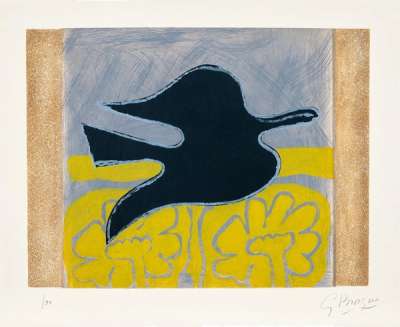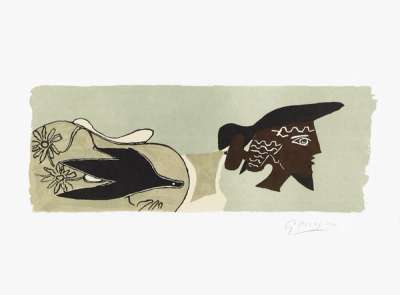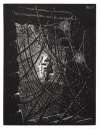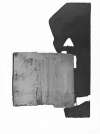Georges
Braque
Georges Braque redefined art with pioneering papier collé and Cubist innovations, reshaping the visual language of the 20th century. If you’re looking for Georges Braque original prints and editions for sale or would like to sell, request a complimentary valuation and browse our network’s most in-demand works.
Georges Braque art for sale
Discover Georges Braque prints for sale, exclusively available through our private network of collectors. Explore signed and unsigned screenprints, lithographs, digital prints, and rare editioned proof prints by era-defining blue chip artists.
Sell Your Art
with Us
with Us
Join Our Network of Collectors. Buy, Sell and Track Demand
Biography
Born in 1882 in Argenteuil, France, Braque emerged as a seminal figure in the evolution of 20th-century art. His early years were marked by a deep appreciation for the visual arts, resulting in formal training as a painter in Paris. It was during this time that he encountered the works of the Impressionists and Fauvists, which would eventually inform his approach to ideate a new art movement. Braque's early works showcased his mastery of traditional techniques, but it was his exposure to the groundbreaking ideas of Cubism, co-developed with Pablo Picasso, that ignited his work.
Together, Picasso and Braque dismantled conventional notions of perspective, form, and representation, giving birth to Analytical Cubism. This movement was characterised by the deconstruction of objects and scenes into geometric shapes and facets, challenging the viewer's perception. Braque's works from this period, such as Violin And Candlestick, would later evolve, introducing collage techniques and venturing into sculpture.
One of the most transformative moments in Braque's career was his development of papier collé, a technique he pioneered in 1912. This method involved incorporating pasted paper fragments into his paintings, adding a tactile and conceptual dimension to his work. It was a watershed moment that expanded the possibilities of artistic expression.
Braque's trajectory was also influenced by his brief yet impactful engagement with Surrealism during the 1920s. Collaborating with Surrealist poet André Breton, Braque's works from this period melded Cubist techniques with dreamlike and fantastical elements. This fusion offered a fresh perspective on his work, demonstrating his adaptability and versatility as an artist.
Following World War I, Braque's style underwent a notable evolution, embracing a greater sense of freedom and departing from his previously rigid compositions. His ascent to fame took a significant leap in 1922, thanks to a prominent exhibition held at the Salon d'Automne in Paris. By the mid-1920s, Braque ventured into design, contributing his vision to two Sergei Diaghilev ballet productions. A milestone in his career arrived in 1933 with a significant retrospective exhibition hosted at the Kunsthalle Basel.


























